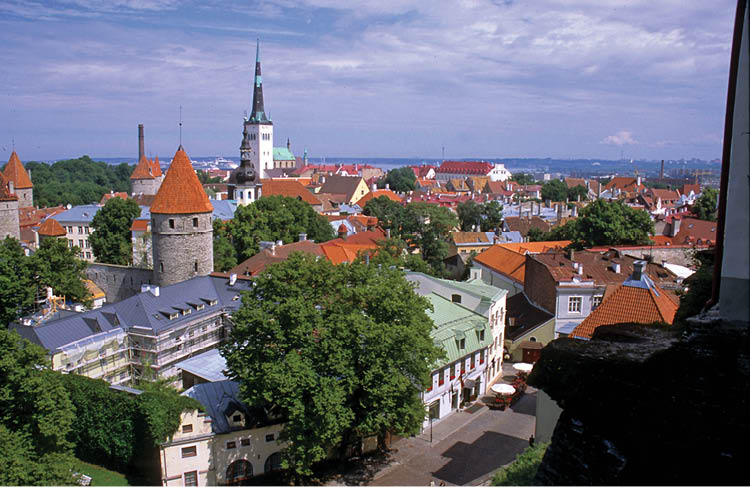The Baltic States


Tallinn’s restored Old Town
The Baltic states of Estonia, Latvia and Lithuania captured the world’s attention in August 1989. In a demonstration of solidarity against Soviet occupation, two million people joined hands and created a human chain that was nearly 400 miles long. Called the Baltic Way, this peaceful but powerful protest ran from Tallinn in Estonia to Vilnius in Lithuania. It was part of the Singing Revolution that had begun at the Tallinn Song Festival in June 1988 (during the early days of glasnost) when masses of people attending the festival began spontaneously singing patriotic songs that had been forbidden by the Soviets since annexing the three Baltic states in 1940.
Map of the Baltic States

All three nations gained independence in August 1991, and they wasted no time promoting economic and political ties with Western Europe, joining NATO and the European Union in 2004. Cruise ships call at all three countries, with Tallinn receiving the most visitors.

A street leading to Alexander Nevsky Cathedral.
Tallinn, capital of Estonia, was founded by the Danish king Waldemar II, who built a fortress here in 1219 (the Estonian words Taani linn mean ‘Danish castle’). Tallinn was eventually sold to a German order of knights called the Livonian Brothers of the Sword, who ruled from their fortified hilltop while the powerful Hanseatic merchants conducted commerce in the walled Lower Town. A stroll through the winding streets of Tallinn is like stepping back to the Middle Ages, with its variety of architecture reflecting the town’s occupation over the centuries by Danes, Germans, Swedes and Russians. Tallinn was heavily damaged during World War II, but its restored Old Town was declared a UNESCO World Heritage Site in 1997.

Estonian knitwear
The Republic of Estonia borders Russia and is about the size of Switzerland. Estonia’s population is 1.4 million and the main language is Estonian – similar to Finnish – although one in three Estonians is Russian. Major religions are Evangelical Lutheran and Russian Orthodox, although much of the population is unaffiliated with a specific church. Government is a parliamentary republic, and the Estonian capital is Tallinn (pop. 400,000). The country’s currency is the euro. The international dialing code is +372.